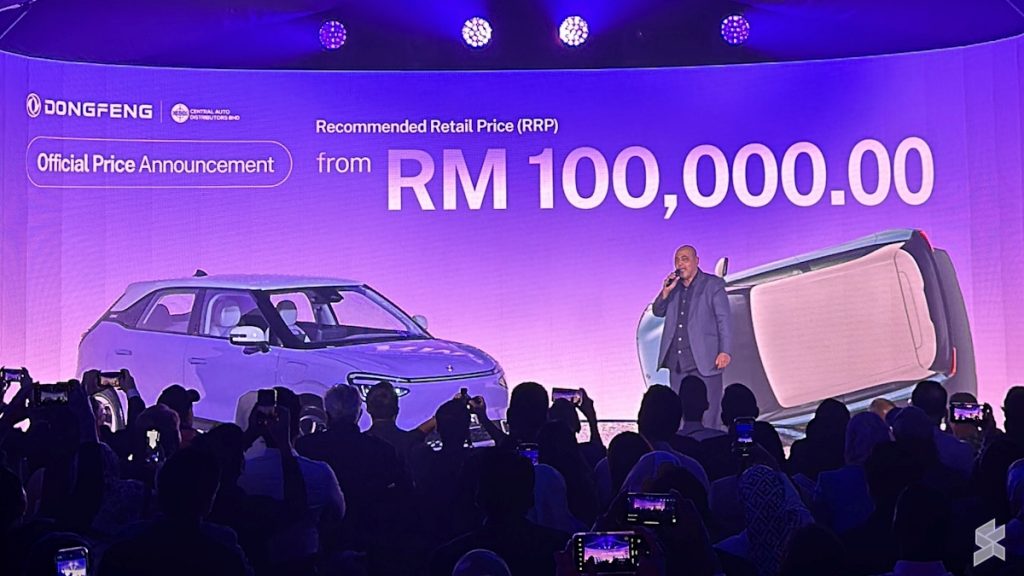If you’re not a fan of huge devices but still want a flagship-grade phone, both Google and Apple have a solution for you. We’re here to compare those two devices, the Google Pixel 9 Pro vs Apple iPhone 15 Pro. The iPhone 16 series is right around the corner, but as we’re waiting for that to happen, we’ll focus on Apple’s current-gen devices. The iPhone 15 Pro is still a truly powerful smartphone, and this should be an interesting comparison.
We’ll first list the specifications of both of these smartphones, as we usually do when it comes to comparisons. There are plenty of categories to cover following that. We will compare their designs, displays, performance, battery life, cameras, and audio output. With that being said, let’s get down to it as there’s plenty to talk about here.
Specs
Google Pixel 9 Pro vs Apple iPhone 15 Pro, respectively
– Screen size:
6.3-inch QHD+ OLED (120Hz, HDR, 3,000 nits)
6.1-inch Super Retina XDR display with ProMotion (120Hz, HDR10, 2,000 nits)
– Display resolution:
2856 x 1280
2796 x 1290
– SoC:
Google Tensor G4
Apple A17 Pro
– RAM:
16GB (LPDDR5X)
8GB
– Storage:
128GB/256GB/512GB/1TB (UFS 3.1)
128GB/256GB/512GB/1TB (NVMe)
– Rear cameras:
50MP (wide, f/1.7 aperture, 1.2um pixel size, OIS, EIS), 48MP (ultrawide, f/1.7 aperture, 123-degree FoV), 48MP (periscope telephoto, f/2.8 aperture, OIS, EIS, 5x optical zoom)
48MP (f/1.78 aperture, second-gen sensor-shift OIS), 12MP (ultrawide, f/2.2 aperture, 120-degree FoV, macro photography), 12MP (telephoto, f/2.8 aperture, 3x optical zoom)
– Front cameras:
42MP (f/2.2 aperture)
12MP (f/1.9 aperture) + TrueDepth
– Battery:
4,700mAh
3,274mAh
– Charging:
27W wired, 21W wireless (Pixel Stand), 12W Qi wireless, 5W reverse wireless (no charger)
20W wired, 15W MagSafe wireless, 7.5W Qi wireless, 4.5W reverse wired (charger not included)
– Dimensions:
152.8 x 72 x 8.5 mm
146.6 x 70.6 x 8.25mm
– Weight:
199 grams
187 grams
– Connectivity:
5G, LTE, NFC, Wi-Fi, USB Type-C, Bluetooth 5.3
– Security:
Ultrasonic in-display fingerprint scanner
Advanced facial scanning
– OS:
Android 14
iOS 17
– Price:
$999+
$999+
– Buy:
Google Pixel 9 Pro (Best Buy, Google Store)
iPhone 15 Pro (Apple)
Google Pixel 9 Pro vs Apple iPhone 15 Pro: Design
Pixel phones usually feel entirely different than iPhones in the hand. Well, that’s not really true for these two phones. A Pixel and an iPhone have never felt more similar in the hand. Both of these smartphones are flat on the front and the back, while they also have a flat frame all around. That frame does curve slightly towards the edges on both smartphones. Even their corners have a rather similar curvature.
Both smartphones include flat displays with very thin bezels. The Pixel 9 Pro has a display camera hole at the top, while the iPhone 15 Pro has a pill-shaped cutout. All the physical keys are located on the right-hand side of the Pixel 9 Pro. The power/lock button sits above the volume up and down keys. The iPhone 15 Pro has a power/lock button on the right, while the volume up and down buttons are on the left. There is also an ‘Action Button’ on the left, which replaced an Alert Slider.
The Pixel 9 Pro has a pill-shaped camera island on the back, with three cameras on the inside. It has a horizontal positioning, and it’s located at the top of the backplate. It does protrude quite a bit on the back. The iPhone 15 Pro has a more regular camera island in the top-left corner. It also includes three cameras in it. The Pixel 9 Pro is taller and wider than the iPhone 15 Pro, while the two are almost identical in terms of thickness. The Pixel 9 Pro does have a larger display, which is why it’s bigger. It is also 12 grams heavier.
The Google Pixel 9 Pro is made out of aluminum and glass. The iPhone 15 Pro combines titanium and glass. Both smartphones have an IP68 certification for water and dust resistance. Both smartphones are also quite slippery.
Google Pixel 9 Pro vs Apple iPhone 15 Pro: Display
There is a 6.3-inch 2856 x 1280 LTPO OLED display included on the Pixel 9 Pro. That panel has an adaptive refresh rate from 1 to 120Hz, and it supports HDR10+ content. The peak brightness of the panel is 3,000 nits. The screen-to-body ratio here is around 87%, while the display aspect ratio is 20:9. The Gorilla Glass Victus 2 from Corning sits on the front to protect the phone’s display. The panel is flat, by the way.

The iPhone 15 Pro, on the other hand, includes a 6.1-inch 2556 x 1179 LTPO Super Retina XDR OLED display. That display is also flat, and it has an adaptive refresh rate of up to 120Hz. HDR10 content is supported, while Dolby Vision support is also on board. The peak brightness here is 2,000 nits. The screen-to-body ratio is around 88%, while the display aspect ratio is 19.5:9. Ceramic Shield glass protects the iPhone 15 Pro’s panel.
Both of these displays are great. They are sharp, vivid, bright, and have great viewing angles. Granted, the Pixel 9 Pro’s panel is a bit brighter, but the iPhone 15 Pro is not far behind. The touch response is really good on both smartphones, so no problem there. Both displays are also more than sharp enough, especially considering their size. You can’t go wrong here, both panels are really, really good.
Google Pixel 9 Pro vs Apple iPhone 15 Pro: Performance
Google’s high-end smartphone is fueled by the Google Tensor G4 chip. That is a 4nm processor backed by 16GB of LPDDR5X RAM here. Google also included UFS 3.1 flash storage. The Apple iPhone 15 Pro is fueled by the Apple A17 Pro chip, a 3nm processor. That chip is considerably more powerful in comparison to the Tensor G4 when sheer power is concerned. Apple is using 8GB of RAM in the iPhone 15 Pro, and NVMe flash storage.
The iPhone 15 Pro does have the advantage when it comes to the processor, but the Tensor G4 is really well-optimized for Pixels and AI tasks. In all honesty, both smartphones are very fluid. They feel great during use, we did not notice any slowdowns or anything of the sort during day-to-day use. Even when you delve into heavy multitasking or something like that, nothing changes, both smartphones deliver great performance.
Things do change a bit when it comes to gaming. The Tensor G4 certainly is not a gaming chip, though it performed better than we hoped. It was able to run basically any game, though the most demanding games didn’t run at the very best graphical settings. If you change that, the phone does start to struggle a little bit and it gets warmer than usual. The iPhone 15 Pro can run basically anything at top settings, though it does get warm also. If you’re gaming a lot, the iPhone 15 Pro is the better option. Other than that, both are very solid in terms of performance.
Google Pixel 9 Pro vs Apple iPhone 15 Pro: Battery
There is a 4,700mAh battery included inside the Pixel 9 Pro. The iPhone 15 Pro, on the flip side, includes a 3,274mAh battery pack. Android smartphones usually have considerably larger battery packs than iPhones, so comparing the two based on capacity doesn’t really make much sense. You’ll be glad to know that both of these smartphones offer really good battery life, though.
We were able to cross the 7-hour screen-on-time mark on both phones, without a problem. Getting to over 8 hours of screen-on-time remains a possibility too. Your mileage may vary, of course, as you’ll be using different apps, in a different way, with different signal strengths. The point is, both smartphones do offer really solid battery life. Both of these are phones that you won’t need to charge during the day, well… at least the vast majority of you will not.
The Pixel 9 Pro supports 27W wired, 21W wireless (with Pixel Stand), 12W Qi wireless, and 5W reverse wireless charging. The iPhone 15 Pro supports 20W wired, 15W MagSafe and Qi 2 wireless, 7.5W Qi wireless, and 4.5W reverse wired charging. The Pixel 9 Pro does charge slightly faster. Do note that neither phone includes a charger in the retail box. You’ll have to get one separately if you don’t already own it.
Google Pixel 9 Pro vs Apple iPhone 15 Pro: Cameras
The Google Pixel 9 Pro has a 50-megapixel main camera, a 48-megapixel ultrawide unit (123-degree FoV), and a 48-megapixel periscope telephoto camera (5x optical zoom). The iPhone 15 Pro, on the other hand, has a 48-megapixel main camera, a 12-megapixel ultrawide camera (120-degree FoV), and a 12-megapixel telephoto unit (3x optical zoom). Both are well-equipped in the hardware department.


Much like their larger siblings, these two smartphones do provide considerably different photos. The Pixel 9 Pro offers contrasty photos and leans more towards cooler tones. It does a fantastic job with HDR scenes and really does really well to balance out shots. The iPhone 15 Pro prefers warmer tones, and it does provide images that are less contrasty and less vivid than what the Pixel 9 Pro offers.
The difference in color temperature in photos is especially visible in low light. It’s quite jarring, actually. The ultrawide and telephoto cameras on both smartphones do a very good job. They do great to keep in line with the colors provided by the main cameras. Ultrawide cameras are also plenty wide to make a difference. The Pixel 9 Pro has a clear advantage when it comes to selfies, while the iPhone 15 Pro takes a win in the video recording category.
Audio
There are stereo speakers included on both of these smartphones. Both sets are loud enough, though nowhere near the loudest we’ve heard. The point is that the sound quality coming from them is good, well-balanced.
An audio jack is not included on either of these two smartphones. You can use their Type-C ports to connect your wired headphones. If you own a pair of wireless ones, you’ll be glad to know that Bluetooth 5.3 is on offer on both phones.



